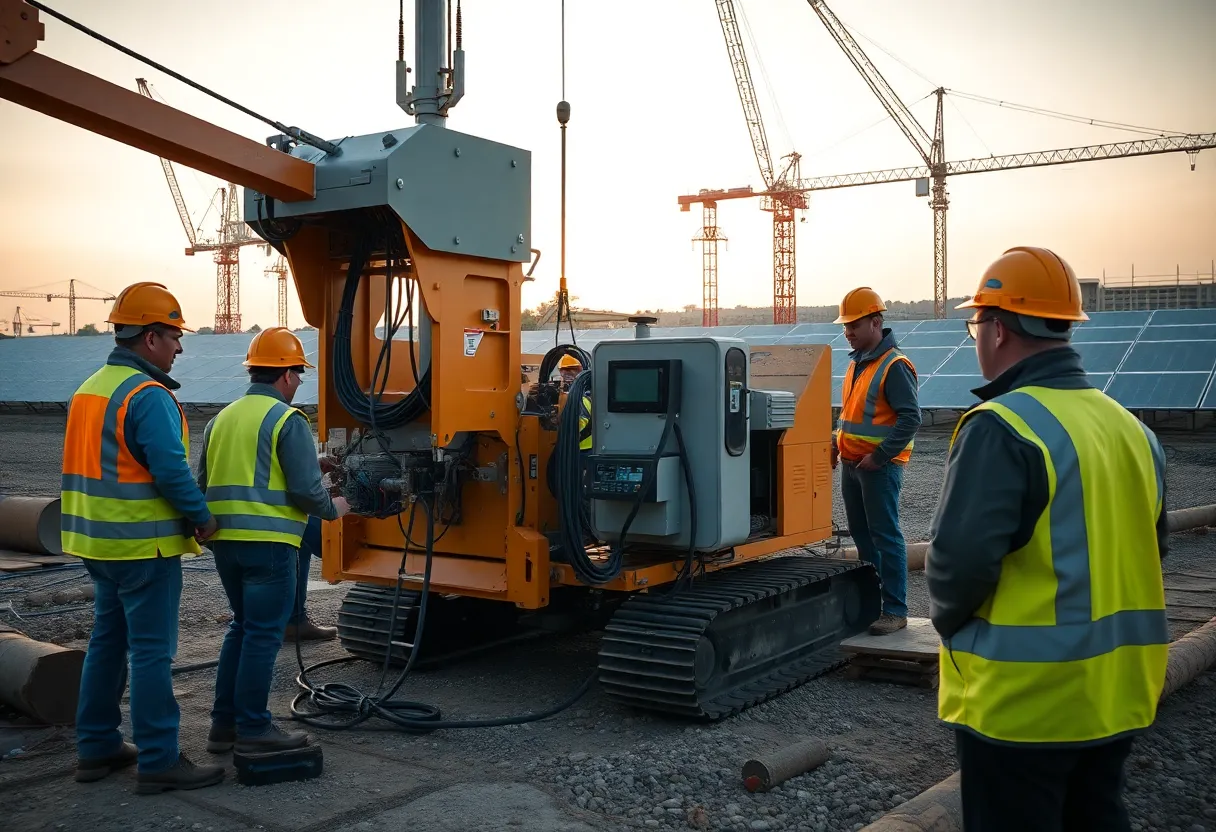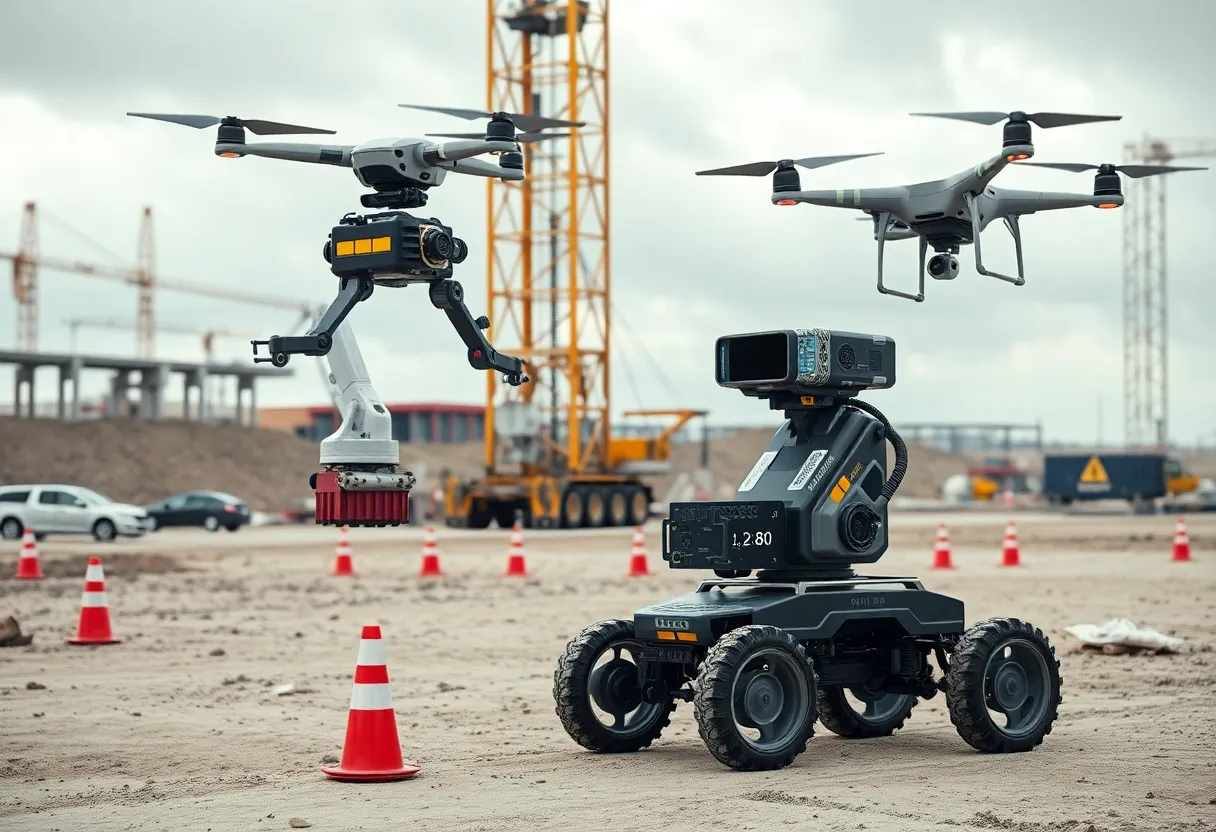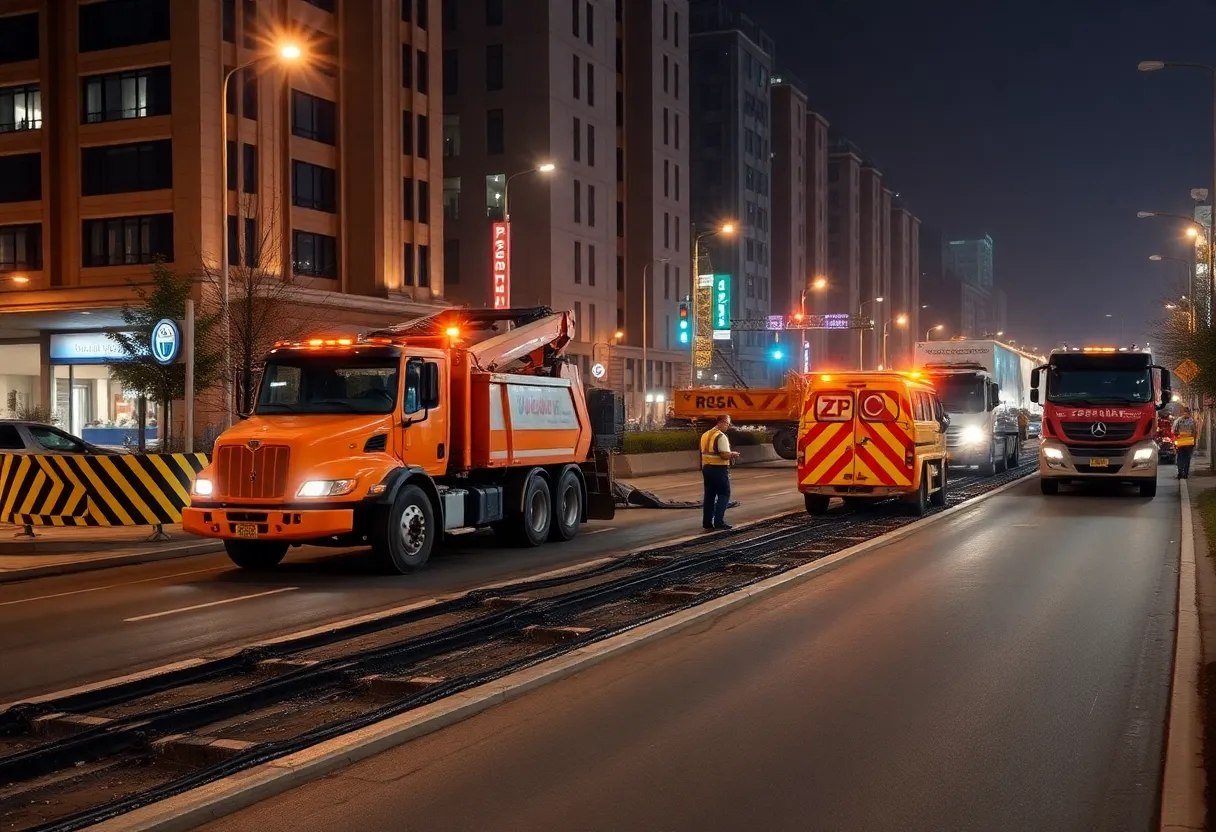Indianapolis, United States, August 27, 2025
News Summary
Xpanner introduced the X1 Kit, a field-ready retrofit that adds Physical AI and software-defined controls to existing construction machines, with initial deployments on pile drivers. The company claims more than 50% efficiency gains, an example 80% labor reduction in piling, and a 50% cut in operation time, though figures are company-reported and should be independently validated. Xpanner says the kit supports task-specific automation and on-job learning via its Mango and Mangosteen systems, operates under a Technology-as-a-Service model, and has named Indianapolis-based NoBull Energy as the inaugural partner in its XBoost program.
Xpanner unveils X1 retrofit kit to add “physical AI” to existing machines; NoBull Energy named inaugural XBoost partner
Xpanner has introduced the flagship X1 Kit, a retrofit option designed to automate and add Physical AI to existing construction site equipment. The kit is positioned to deliver more than 50% efficiency gains without purchasing new machinery, and a first partner—NoBull Energy—was named for the XBoost program that aims to broaden collaboration in solar projects. The X1 is described as field-ready and capable of integrating across brands and models, turning aging machines into software-defined assets on the jobsite.
In line with its broader mission, Xpanner emphasizes turning cutting-edge technology into practical tools that operators can use on the ground. The X1 extends a task-specific automation approach, moving beyond simply automating equipment to automating distinct tasks across a project so that automation compounds into a more automated overall workflow. Initial deployments have focused on pile drivers, with plans to expand to additional machinery as demand grows and field learnings accumulate.
Xpanner traces its roots to South Korea, where the company was founded in 2020, before expanding into the United States in 2023. The company operates under a Technology as a Service (TaaS) model that blends automation and robotics to streamline construction processes. Earlier offerings included an “automation-ready package” for construction equipment such as pile drivers and excavators, featuring pre-configured remote control, smart attachments, and precision guidance systems. The X1 kit represents a further evolution by linking these capabilities to a broader physical AI framework across brands and models.
In its adoption strategy, Xpanner pursues a bottom-up path developed in collaboration with workers to understand their needs and acceptance thresholds. The company describes a three-stage pathway: initial exposure through peers using automation; a curious skeptic phase where workers observe peer successes; and a technology advocate phase where workers actively contribute to co-developing automation across tasks. This approach has yielded the Mango and Mangosteen systems, which connect different brands’ products and attachments to improve precision and flexibility on site.
Xpanner asserts the X1 can be applied across a range of construction tasks and is already deployed on pile-driving equipment, a high-precision, high-impact application especially relevant to solar installations. The company notes that ongoing evolution on the jobsite creates a foundational physical AI infrastructure that learns and improves with use, potentially expanding beyond pile drivers as the roadmap progresses. The practical benefits highlighted by the company include reduced need for highly skilled labor and notable cost reductions, alongside efficiency gains that can exceed half in some use cases.
Separately, a formal partnership was announced that names NoBull Energy of Indianapolis as the inaugural partner of the XBoost Partnership Program. The program aims to bolster collaboration with renewable energy developers and EPCs, combining Xpanner’s smart construction solutions with NoBull Energy’s project execution capabilities to advance solar and storage projects. NoBull Energy brings experience across PV and BESS projects and offers multiple contracting strategies, including self-performing, subcontracting, or managing projects to meet client requirements. Leadership statements describe the partnership as a step toward expanding renewable energy infrastructure through integrated technology and execution expertise.
Market context frames automation as a means to address persistent labor shortages and skill gaps on construction sites. Despite advances in AI and robotics, pen-and-paper workflows remain common on many sites, and a sizable portion of the workforce faces retirement risk in the coming years. Advocates describe smart construction solutions as a way to keep projects on track by enabling less-experienced workers to perform tasks with precision, while automation augments rather than replaces human labor. Task automation, including the use of cameras and GPS sensors for spotting and measuring, is highlighted as a way to reassign helpers to higher-value and safer roles.
Xpanner reports growing US traction since entering the market in late 2023 and cites project activity across Alabama, Missouri, and Texas in 2024, with anticipated developments in Arizona, California, and Colorado in 2025. The company has earned recognition in the field through multiple industry listings, including appearances on a robotics-focused Top 50 list for two consecutive years and a notable demonstration award in a national competition. The overarching mission remains to ensure that beneficial technologies are practical and usable on site, addressing skilled labor shortages by boosting worker productivity and efficiency through accessible automation.
Beyond the X1 itself, Xpanner underscores a broader view of the construction workflow, not just the machines. By focusing on task-level automation, the company argues, sites can achieve greater precision and reliability while enabling operators of varying experience levels to contribute more effectively. The X1 technology is described as retrofitting seamlessly into existing machinery, offering operators and supervisors new levels of control and visibility over jobsite operations. This integrated approach is intended to distinguish Xpanner in a competitive market by prioritizing usability and tangible field benefits over abstract capabilities.
Key features
| Feature | Description |
|---|---|
| Xpanner X1 Kit retrofit option | Enables existing construction machinery to gain Physical AI capabilities without new equipment purchases. |
| Cross-brand SDM | Transforms diverse brands/models into software-defined machinery capable of shared intelligence on site. |
| Task-specific automation | Automates distinct site tasks to collectively automate entire workflows rather than isolated machines. |
| Adoption approach | Three-stage process: exposure, curious skeptic, technology advocate, built around peer demonstrations and worker collaboration. |
| Early outcomes | Reported labor reductions up to ~80% and operation-time reductions around 50% in piling work; efficiency gains cited above 50% in some cases. |
| Product family | Mango and Mangosteen systems connect multiple brands’ products and attachments to improve precision. |
| Market availability | X1 is currently available and designed for immediate field readiness with ongoing roadmap to add more machinery. |
| NoBull Energy partnership | Inaugural partner in the XBoost program to align solar project execution with Xpanner’s automation capabilities. |
| Business model | Technology as a Service (TaaS) model integrating automation and robotics to streamline construction processes. |
| Market footprint | Active in the US since 2023, with 2024 project work in several states and planned 2025 growth in new markets. |
Frequently Asked Questions
What is the X1 Kit?
The X1 Kit is a retrofit option that adds Physical AI capabilities to existing construction machines, aiming to boost productivity and reduce costs without buying new equipment.
What does Physical AI mean in this context?
It refers to a layer of intelligent software and sensing that enables on-site machinery to perform tasks with higher precision and coordination, learning over time and integrating with multiple brands and models.
How much efficiency is claimed with X1?
The claims include efficiency gains exceeding 50%, with specific piling work showing labor reductions up to 80% and operation-time reductions near 50% in certain tasks.
Who is the inaugural XBoost partner?
NoBull Energy was named as the first partner in the XBoost program, bringing project execution expertise to a collaboration focused on solar and renewable energy projects.
What is Mango and Mangosteen?
They are system families designed to connect various brands’ products and attachments on the jobsite to improve precision and flexibility within the automation framework.
How does adoption work on the jobsite?
Xpanner follows a bottom-up approach with a three-stage path: expose workers to peer use of automation, move skeptics toward curiosity, and evolve participants into technology advocates who help co-develop and expand automation across tasks.
Deeper Dive: News & Info About This Topic
Additional Resources
- ForConstructionPros: Xpanner — How smart construction can improve worker efficiency
- Wikipedia: Construction robotics
- Solar Power World: X1 Kit can automate controls on existing construction equipment
- Google Search: Xpanner X1 Kit
- Newsfile: Xpanner announces NoBull Energy as first XBoost partner
- Google Scholar: Xpanner XBoost
- Wikipedia: Automation
- Encyclopedia Britannica: automation
- Encyclopedia Britannica: Solar energy
- Google News: Xpanner X1 Kit





